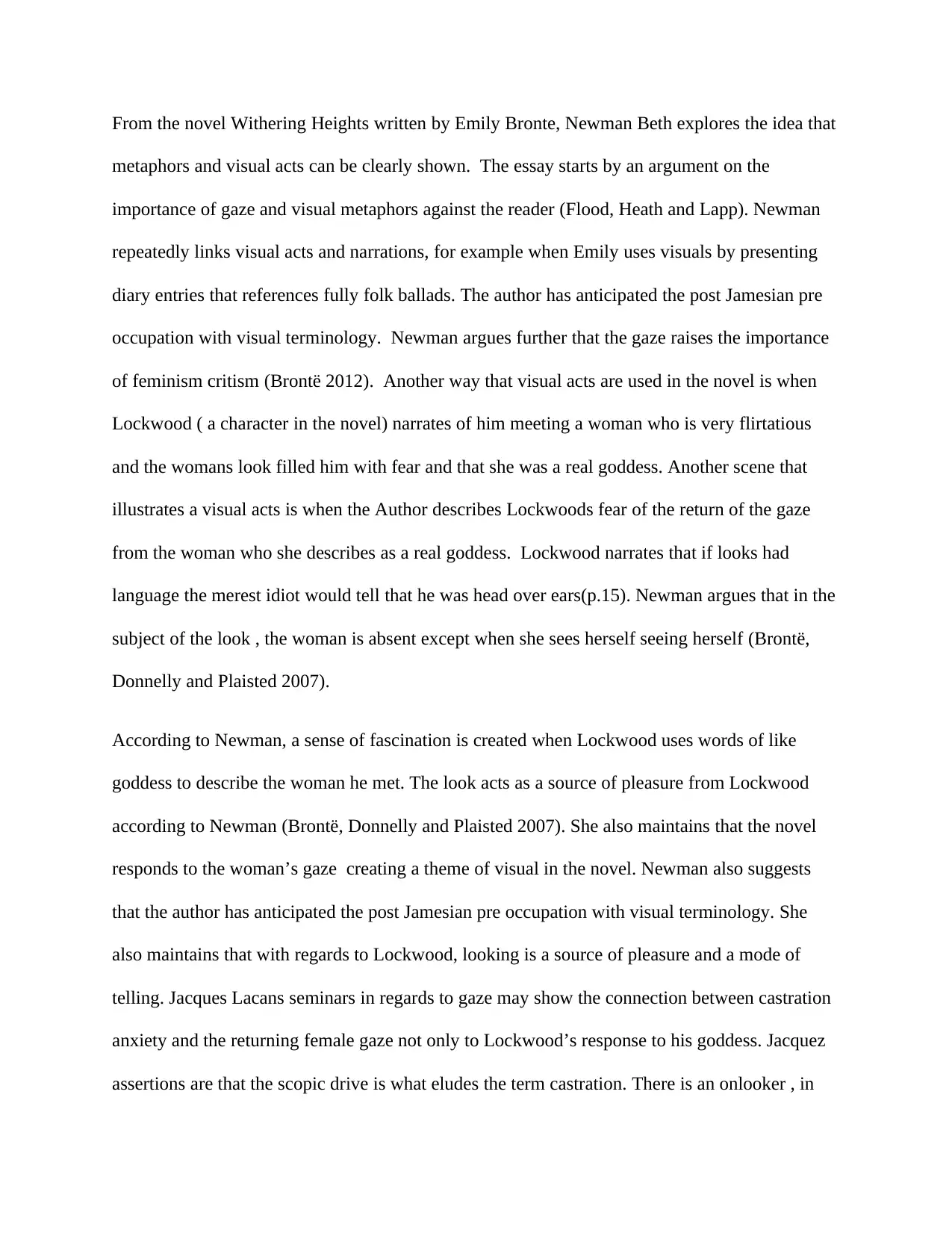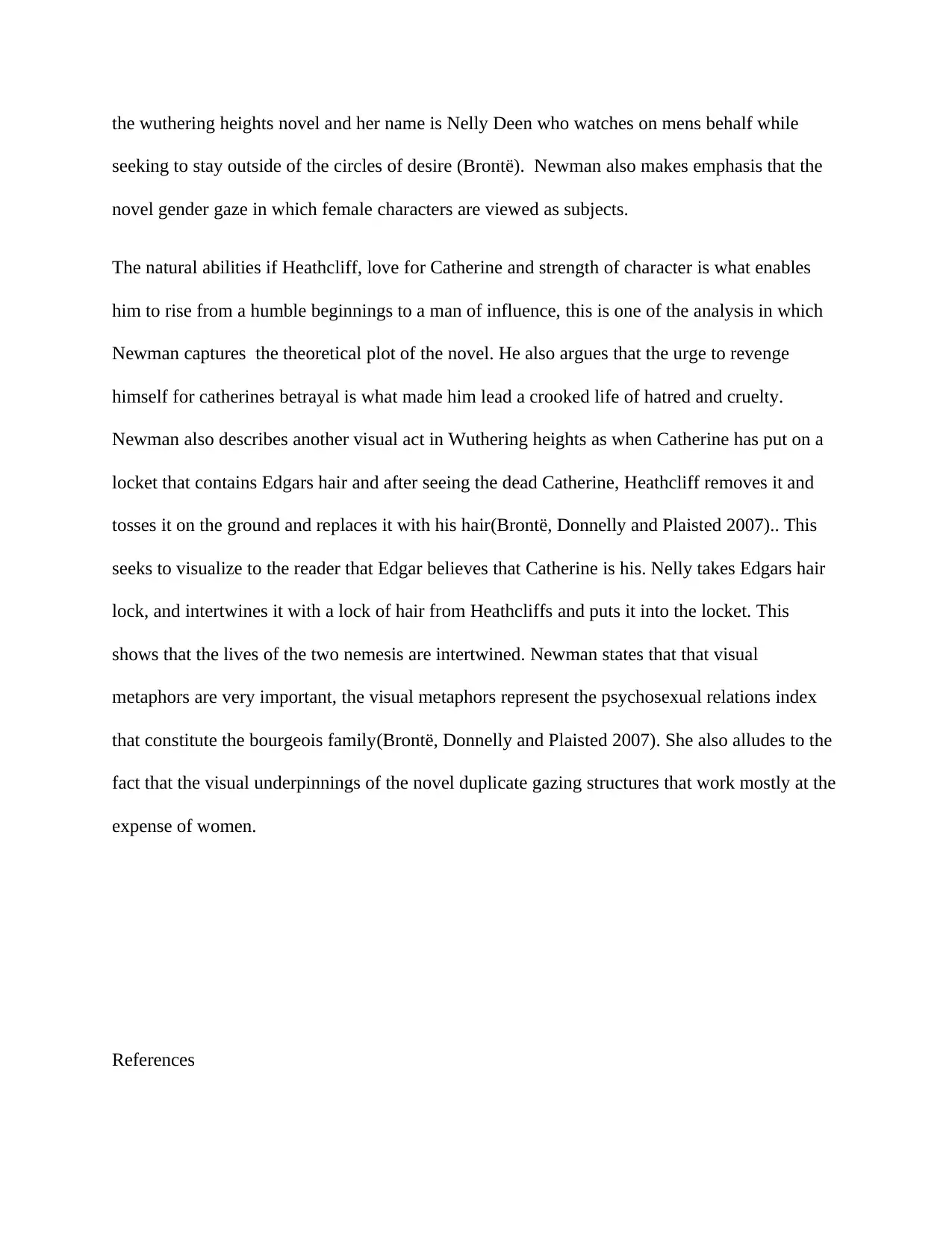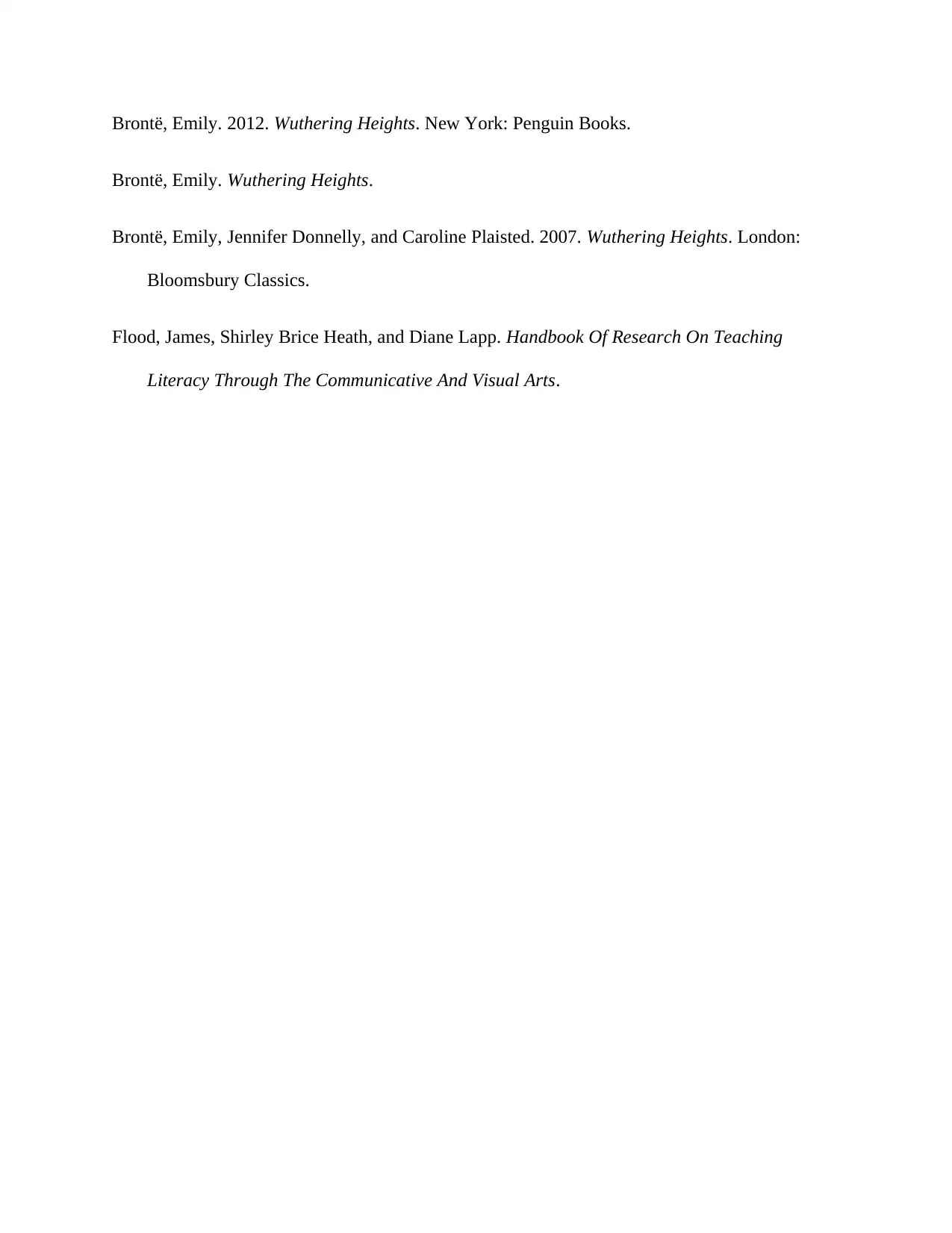Annotated Bibliography: Newman on Gender, Gaze in Wuthering Heights
VerifiedAdded on 2023/06/16
|4
|741
|412
Annotated Bibliography
AI Summary
This annotated bibliography entry focuses on Beth Newman's analysis of Emily Bronte's "Wuthering Heights," exploring the relationship between novelistic narrative and visual acts, particularly the concept of the gaze. Newman argues that visual metaphors are central to understanding the novel's themes and that the gaze raises important issues for feminist criticism. The analysis highlights how characters like Lockwood contribute to the visual narrative through their perceptions and interactions, emphasizing the interplay between gender, narration, and the act of looking. Newman also suggests that Bronte anticipated later preoccupations with visual terminology, linking the novel's feminist poetics to its visual elements. The essay further discusses how the gaze functions as a source of pleasure and a mode of storytelling, ultimately revealing the complex dynamics of power and desire within the novel. This assignment was for the course English Literature after 1830 – Spring, 2017.
1 out of 4






![[object Object]](/_next/static/media/star-bottom.7253800d.svg)